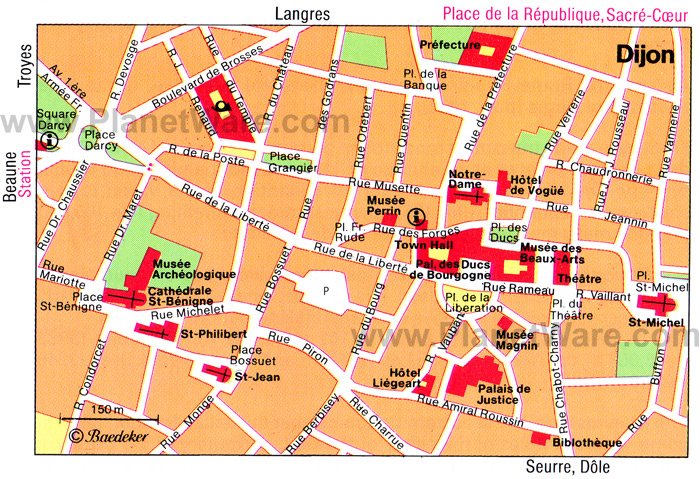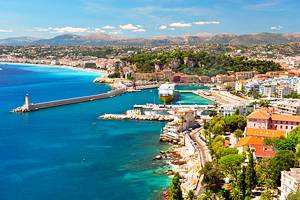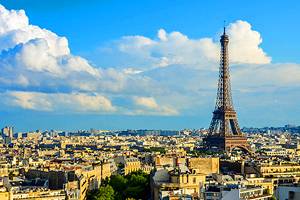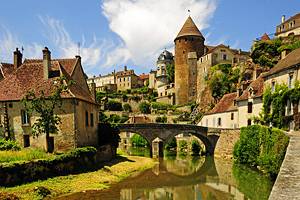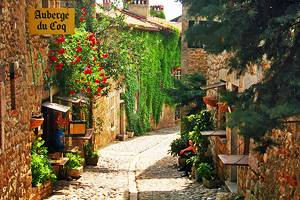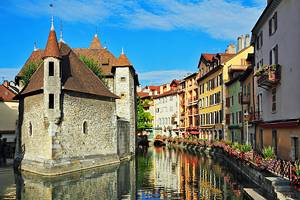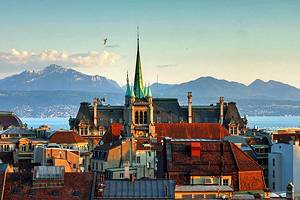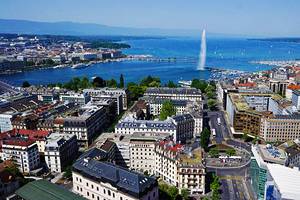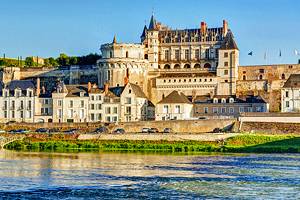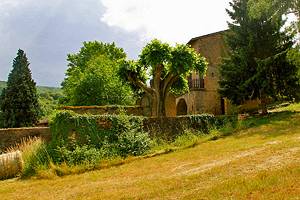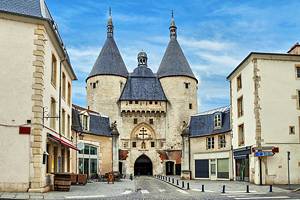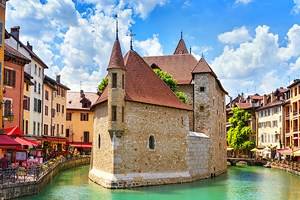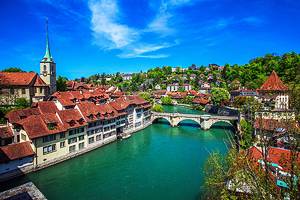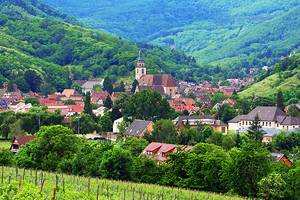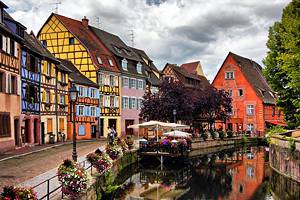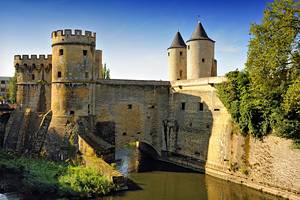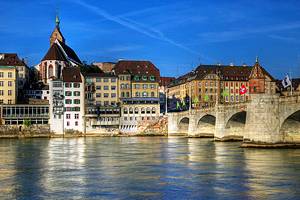Tourist Attractions in Dijon
Dijon is famous for its mustard. However, the quaint boutiques selling old-fashioned mustard are just the beginning of the tourist attractions.
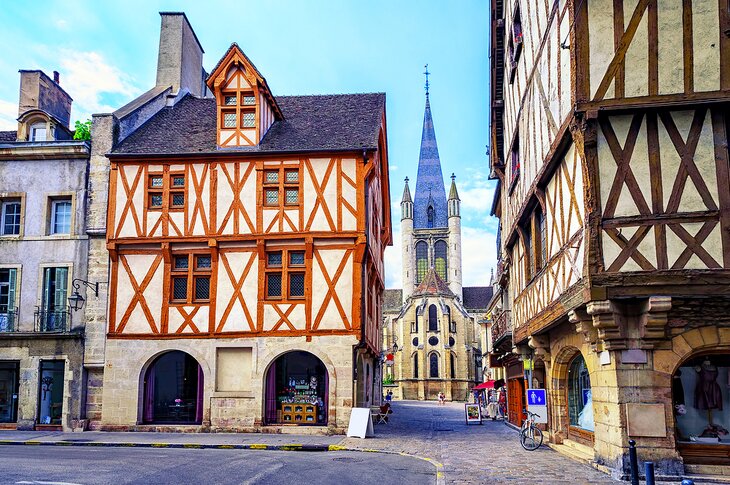
Known as the "City of Dukes," Dijon was the capital of the medieval duchy of Burgundy. The center of town boasts a UNESCO World Heritage designation, because of its well-preserved aristocratic palaces and elegant hôtels particuliers, former residences of Dukes of Burgundy and other distinguished owners.
As you stroll the historic center of Dijon, take your time exploring the quaint cobblestone streets and soaking up the old-world ambience. Wander at leisure, stopping to admire medieval half-timbered houses and Renaissance mansions. You also must browse the boutiques and spend time at small cafés to immerse yourself in the local culture.
Dijon is also a place to savor gourmet meals at traditional restaurants. Don't leave without trying authentic culinary specialties such as escargot and boeuf bourguignon for a taste of classic French gastronomy.
Learn about the best places to visit in this fascinating historic city with our list of top attractions and things to do in Dijon.
Palais des Ducs and the Musée des Beaux-Arts
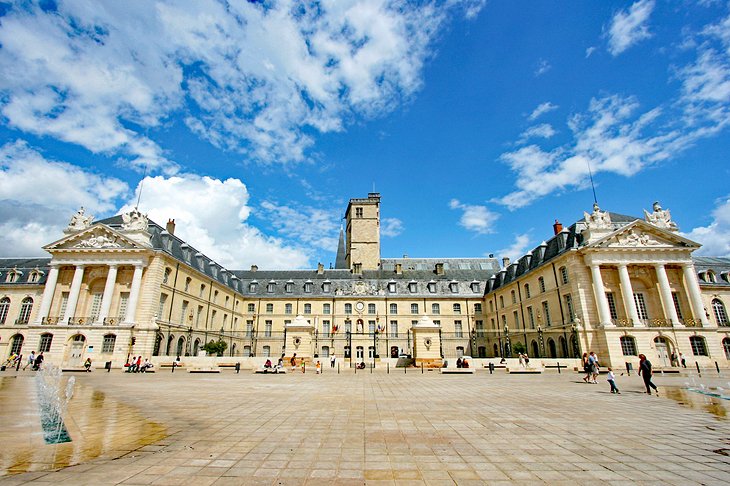
The Palais des Ducs et des États de Bourgogne (Ducal Palace) was the residence of the Dukes of Burgundy in the 15th and 16th centuries. Renovations in the 17th century transformed the building into a refined Neoclassical palace that recalls the Château de Versailles (designed by the same architect, Jules Hardouin-Mansart).
Today, the Palais des Ducs et des États de Bourgogne is used as the Hôtel de Ville (Town Hall), and only certain areas are open to the public. The Dijon Office of Tourism organizes guided visits of the 18th-century Chapelle des Elus and the Tour de Philippe le Bon (tower), which affords sensational views from a platform at the top (reached by climbing 316 steps).
The Palais des Ducs also houses the Musée des Beaux-Arts, a fine arts museum that displays exhibits within the palace's former kitchen, guard room, and grand reception halls (the East wing of the palace). The museum contains one of the richest art collections in France, with around 13,000 pieces, from Egyptian antiquities to contemporary paintings.
Highlights include masterpieces of the Italian Renaissance by Titian, Veronese, and Lorenzo Lotto; 17th-century paintings by Peter Paul Rubens, Philippe de Champaigne, and Georges de La Tour; 19th-century works by Gustave Moreau and Eugène Delacroix; and Impressionist paintings by Claude Monet, Alfred Sisley, Edouard Manet, and Camille Pissarro.
Not to be missed are Georges de La Tour's Le Souffleur à la Lampe, a painting that reveals an amazingly realistic technique of depicting candlelight; Effet de Neige à Eragny by Camille Pissarro, a masterpiece that illustrates a snow-covered scene in delicate brushstrokes; and Adam et Eve au Paradis by Guido Reni, which presents an idealized image of Adam and Eve in the Garden of Eden.
Address: 1 Place de la Libération, Dijon
Cathédrale Saint-Bénigne
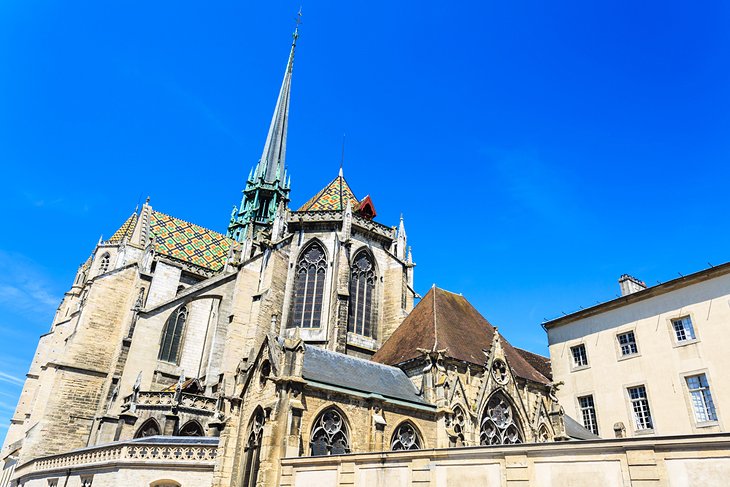
The Cathédrale Saint-Bénigne is the city's finest example of Burgundian Gothic architecture. Built between 1280 and 1314, the cathedral was originally a Benedictine abbey church. The cathedral is dedicated to Saint Benignus, who was martyred in Dijon in the late 2nd century.
The only remaining vestige of the original abbey is the "Rotonde," a remarkable three-story subterranean crypt, which contains the relics of Saint Benignus. This solemn domed space dates to the 10th century (Carolingian era) and resembles the interior of the Church of the Holy Sepulchre in Jerusalem.
Today, this emblematic twin-towered monument still provides a place of spiritual worship for the residents of Dijon with daily Mass celebrations.
One of the most inspiring things to do in Dijon is attend one of the cathedral's organ concerts, performed by renowned musicians throughout the year.
Save time to visit the Musée Archéologique (Archaeological Museum), which is housed within the historic buildings of the old Benedictine abbey. The museum displays an excellent collection of Gallo-Roman artifacts, Romanesque sculptures, and medieval antiquities.
Address: Place Saint-Bénigne, Dijon
Eglise Notre-Dame
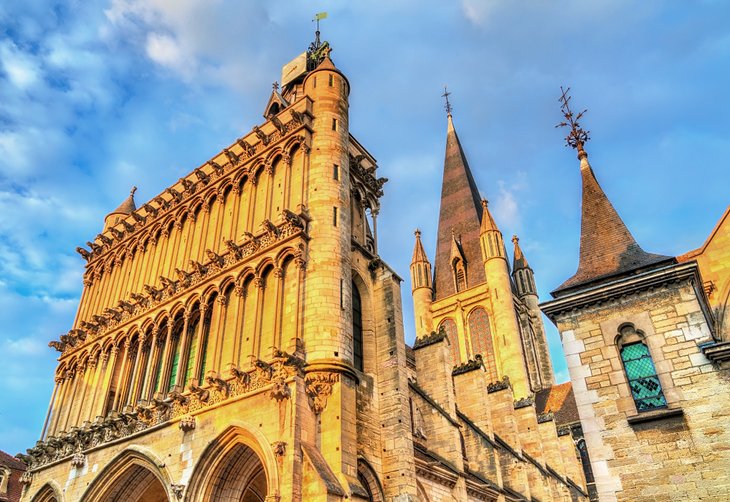
The Eglise Notre-Dame is the "Grande Dame" of Dijon churches. Built between 1230 and 1250, the church exemplifies Burgundian Gothic architecture. The striking facade features three rows of whimsical gargoyles, while the interior is a marvelous high-vaulted nave.
The church has a clock tower created in 1382 with charming Jacquemarts, a family of figurines that strike the church bells. Inside the chapel on the right is a precious 11th-century Black Virgin, one of the oldest wooden statues in France.
An owl sculpture on the exterior is considered a good luck charm. The local tradition is to stroke the owl and then make a wish.
Address: Rue de la Préfecture, Dijon
Musée de la Vie Bourguignonne Perrin de Puycousin
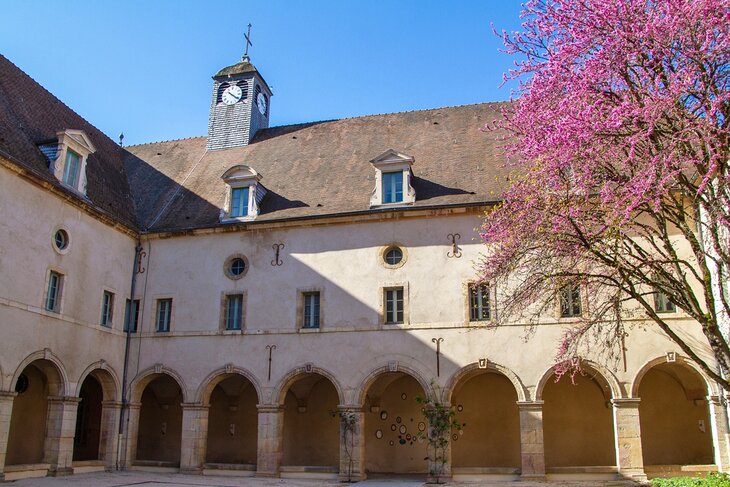
The Musée de la Vie Bourguignonne Perrin de Puycousin is a great place to learn about the culture of the Burgundy region. Exhibits focus on the history of Dijon, traditional costumes of the region, and everyday objects from the 19th to 20th century. The collection was donated by the 19th-century folklorist Monsieur Perrin de Puycousin.
The museum is housed within the former Monastère des Bernardines, a splendid 17th-century monastery in Dijon's historic center. The monastery includes multiple buildings, courtyards, a cloister, and gardens.
An exhibit of Faïence de Dijon reveals the beauty of 17th-century faïence ceramics (plates, dishes, pitchers, mustard jars, etc.) decorated with delicate motifs.
The museum also has a boutique that sells books, postcards, and vintage-style wooden toys.
Address: Monastère des Bernardines, 17 Rue Sainte-Anne, Dijon
Chartreuse de Champmol
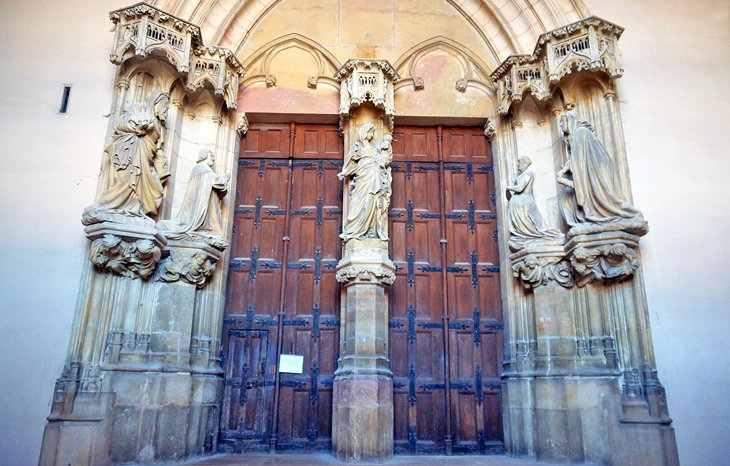
Outside of Dijon's historic center (about a five-minute drive or 30-minute walk), the Chartreuse de Champmol is the former necropolis of the Dukes of Burgundy. However, the monument was converted into a hospital in the 19th century.
The site is worth visiting to admire two superb examples of Burgundian sculpture created in 1404: the Puits de Moïse ("Well of Moses") and the Portail de la Chapelle (Doorway of the Chapel). The "Puits de Moïse" features decorative columns topped by angels and Old Testament prophets. The Portail de la Chapelle is the entryway for a chapel that now serves the hospital community.
Address: Centre Hospitalier Spécialisé de la Chartreuse, 1 Boulevard du Chanoine Kir, Dijon
Dijon Mustard Boutiques and Culinary Stores
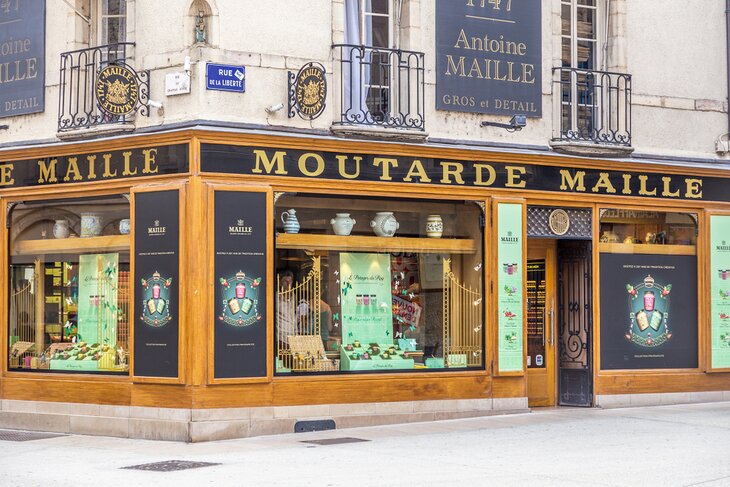
For gourmands around the world, it is a happy coincidence that the woodland terrain around Dijon provides the ideal conditions for cultivating mustard plants with pungent seeds. Traditional Dijon Mustard is distinctive and unique to the Burgundy region.
Two prestigious mustard boutiques are found in the historic center of town: La Maison Maille (32 Rue de la Liberté) founded in 1747 and La Moutarderie Edmond Fallot (16 Rue de la Chouette), dating to 1840, which offers tours of its mustard mill and mustard tastings.
Next on the list of must-see gourmet destinations is Les Halles de Dijon. This exceptional culinary marketplace occupies a covered hall that is listed as a Monument Historique. Les Halles de Dijon hosts hundreds of vendors who sell fresh fruits, vegetables, cheese, bread, and specialty food products.
Near La Maison Maille, the Mulot & Petitjean boutique (16 Rue de la Liberté) sells gingerbread cakes, a specialty of Dijon. Founded in 1796 and listed as an Entreprise du Patrimoine Vivant, the Mulot & Petitjean company uses gingerbread recipes that have been passed down through the generations. Mulot & Petitjean also has a gingerbread museum on the Boulevard de l'Ouest.
Jardin de l'Arquebuse (Botanical Garden)

The Jardin de l'Arquebuse offers an oasis of relaxation outside of Dijon's historic center. This historic botanical garden features an arboretum, flower-filled meadows, and an English-style park with a stream and meandering pathways.
Developed in collaboration with the Cité Internationale de la Gastronomie, the Jardin de l'Arquebuse has a new area devoted to plants cultivated for food. The landscaping includes four sections, representing different types of plants used for culinary purposes.
Science lovers will appreciate the park's natural science museum and the Planétarium Hubert Curien, which presents 360-degree projections. The natural science museum presents exhibits on zoology, geology, mineralogy, and entomology.
Address: 1 Avenue Albert 1er, Dijon
Eglise Saint-Michel
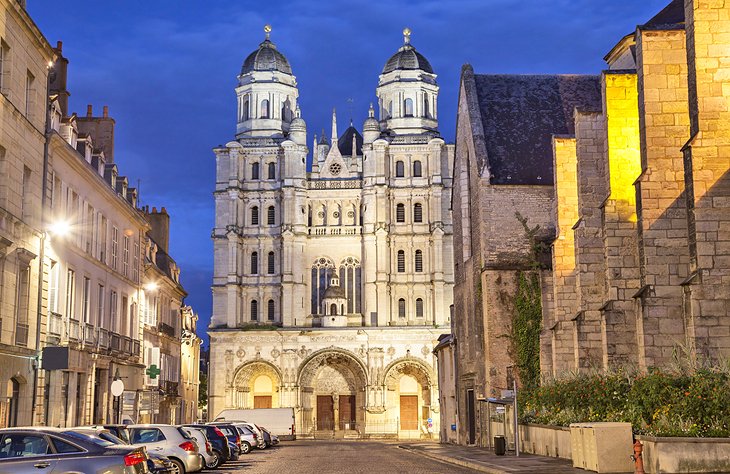
The Eglise Saint-Michel harmoniously blends medieval and Renaissance architectural elements. Founded in 1497, the church was constructed over two centuries, which explains the unusual mix of styles. Three richly sculpted doorways feature ornate carvings of angels and other figures.
Step inside to admire the exquisite high-vaulted Gothic nave, which has an ambience of grandeur and brightness. The sanctuary is illuminated by beautiful 19th-century stained-glass windows that have a dreamy, romantic quality.
The church is classified as a Monument Historique.
Address: Place Saint-Michel, Dijon
Hôtel de Vogüé
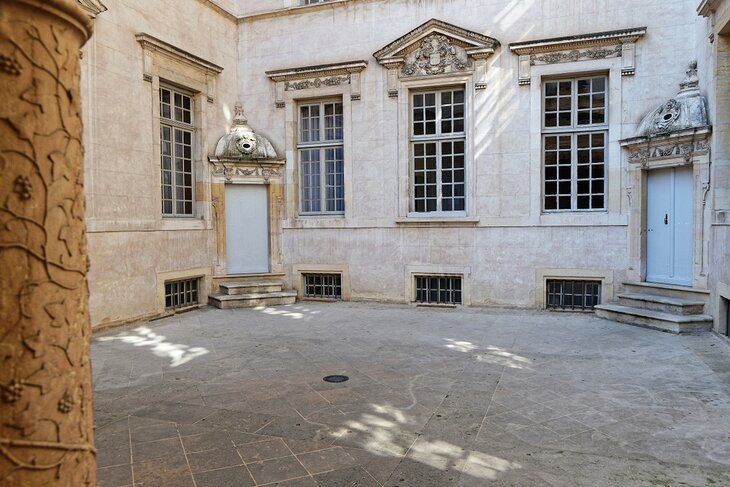
Near the Ducal Palace, the Hôtel de Vogüé is a magnificent hôtel particulier (mansion). The building was constructed in 1614 for Etienne Bouhier, an advisor of the Bourgogne parliament.
This exquisite example of Italian Renaissance architecture incorporates a grand entrance porch and ornately adorned courtyard. The entire building is characterized by its decorative richness. The tiled roof features the colorful geometric patterns that are typical in Burgundy.
The Hôtel de Vogüé hosts temporary exhibitions.
Address: 8 Rue de la Chouette, Dijon
Musée Magnin
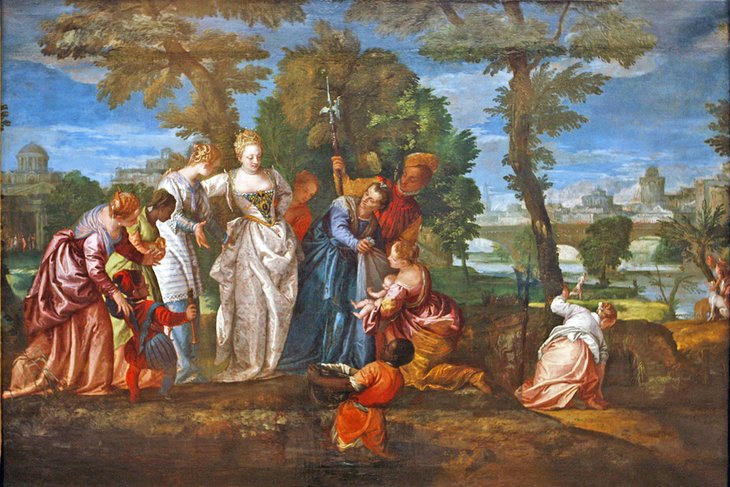
The Musée Magnin displays its collection within the Hôtel Lantin, an elegant 17th-century hôtel particulier in Dijon's historic center. The collection was acquired in the 19th century by amateur art collectors Jeanne and Maurice Magnin and is presented within their family's former home.
The museum has a rich collection of French paintings (650 pieces), most of which were created between 1630 and 1650 as well as 18th-century and early 19th-century works.
You can shop for postcards and artwork-inspired souvenirs at the museum's boutique. Guided tours and audio guides (in English and French) are available.
Address: 4 Rue de Bons Enfants, Dijon
Musée d'Art Sacré (Museum of Religious Art)
The Musée d'Art Sacré is housed in a 17th-century church that was once part of the Monastère des Bernardines. The Monastère des Bernardines was a Cistercian nunnery founded in the 12th century.
The museum displays religious artworks from churches and monasteries in the region. The collection of paintings, sculptures, textiles, and religious objects is quite extensive, as it includes works created between the 12th century and the 20th century.
The museum is open daily year-round, except for Tuesdays and holidays. Hours are 9:30am until 12:30pm and 2pm until 6pm. Holiday closures: January 1st, May 1st, May 8th, July 14th, November 1st, November 11th, and December 25th.
Address: 17 Rue Sainte-Anne, Dijon
More Related Articles on PlanetWare.com
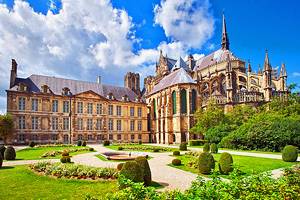
Historic Treasures: Less than two hours from Paris by train, Dijon is a perfect starting point to begin exploring the countryside of Burgundy. Nestled within the region's gentle rolling hills and lush forests are numerous Romanesque churches, medieval towns, and ancient monasteries. The neighboring Champagne region also abounds with cultural treasures: marvelous castles, glorious churches, and quaint villages. A touristic highlight of Champagne is the historic city of Reims, renowned for its UNESCO-listed cathedral.
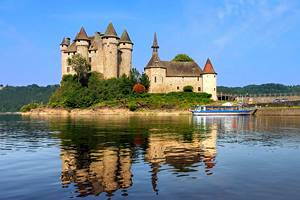
Idyllic Landscapes: The Burgundy region borders two other regions of France that are distinguished by their natural beauty. A rugged off-the-beaten-path destination, the Auvergne region is one of the best places to visit in France to go hiking, mountain biking, horseback riding, and fishing. Also bordering Burgundy, the picturesque French-Jura dazzles visitors with its awe-inspiring nature sites, rejuvenating thermal spas, scenic hiking trails, and ski resorts, as well as fascinating medieval towns and ancient churches.
